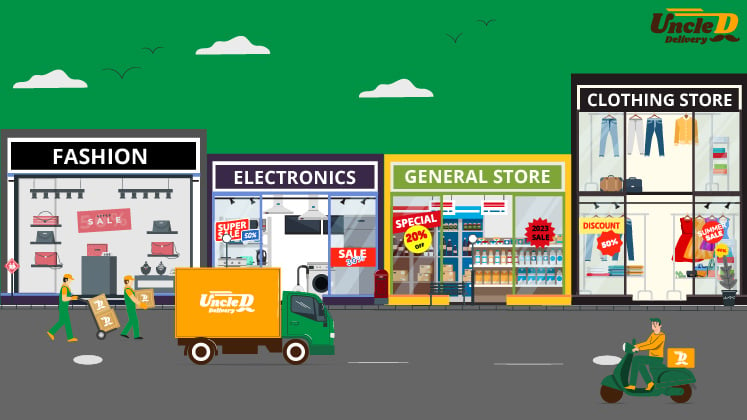What Role Does the Gig Economy Play in Last-Mile Delivery Today?
The last-mile delivery landscape has changed dramatically over the past decade, driven by the explosive growth of e-commerce and heightened consumer expectations for faster service. At the center of this transformation is the gig economy, a workforce model based on short-term, flexible contracts typically facilitated through digital platforms. As traditional logistics systems struggle to keep pace with demand, gig workers have become an essential part of delivering packages, groceries, and other items directly to consumers' doors. This shift is reshaping how logistics operations are planned and executed, and it is also raising new questions around employment, fairness, and sustainability.
The Shift Toward Flexible Labor in Delivery
Last-mile delivery is widely considered the most complex and costly stage of the supply chain. It involves getting a product from a fulfillment center or local warehouse to the final destination, usually a consumer’s home or office. This final leg is not only time-sensitive but also highly variable depending on geography, traffic conditions, and order volume. To manage this challenge efficiently, companies are increasingly turning to a flexible workforce that can respond to real-time demand spikes.
Gig workers provide this flexibility. They operate on an as-needed basis, often using personal vehicles and smartphones to accept and complete delivery jobs. This arrangement reduces the need for companies to maintain large fleets or hire full-time drivers with fixed salaries and benefits. Instead, the labor force becomes dynamic, expanding and contracting as required. It allows businesses to adapt more rapidly to shifts in demand during weekends, holidays, and seasonal surges.
The gig economy also enables a decentralized approach to delivery. Rather than relying on a few large distribution hubs, orders can be fulfilled from multiple points, closer to the customer. This proximity makes same-day or even one-hour deliveries a viable reality in many urban areas, improving convenience for consumers and reducing pressure on infrastructure.
Benefits and System-Level Efficiency
One of the most significant contributions of the gig economy to last-mile delivery is the speed at which it allows goods to be moved. Because gig workers often live within or near the areas they serve, they are already embedded in the local environment. Their familiarity with neighborhoods and road networks helps optimize delivery routes, reduce travel time, and avoid delays caused by navigation errors. This local knowledge becomes especially valuable in densely populated cities where time is a premium.
From an operational standpoint, the gig model lowers entry barriers for workforce participation. Individuals can start earning relatively quickly with minimal onboarding, making it an accessible source of income for a wide segment of the population. This includes students, part-time workers, or those in between jobs. Their participation fills gaps in the logistics network that would otherwise be hard to cover using only permanent staff.
The model also brings cost savings to businesses. Since gig workers are not salaried and are typically compensated per task, companies do not bear the same level of fixed expenses as they would with traditional employment structures. They are not required to offer insurance, paid leave, or retirement contributions, which significantly lowers overhead. These cost advantages are then passed on to customers in the form of competitive delivery charges or subscription-based services.
At a system level, the gig economy enables rapid scaling without long-term commitment. This is particularly important for small businesses that want to offer local delivery without building their own logistics operations from scratch. Digital platforms and app-based ecosystems have made it possible to outsource delivery with minimal infrastructure, further democratizing access to fast shipping solutions.
Concerns for Workers and Structural Challenges
While the gig economy offers clear logistical and financial benefits, it also introduces a number of challenges for those who depend on it for income. The most prominent issue is the absence of job security. Gig workers are not considered formal employees, which means they often lack access to essential protections such as health coverage, workplace injury compensation, or stable income. This precarious status leaves them vulnerable during periods of low demand, economic downturns, or personal emergencies.
Income variability is another major concern. Since compensation is often tied to the number of completed tasks, workers may struggle to earn a consistent living wage, particularly in competitive urban markets. Factors like fuel prices, traffic congestion, and delivery radius can further erode earnings. Moreover, algorithmic assignment systems that govern job distribution are often opaque, making it difficult for workers to predict or influence how many opportunities they will receive.
Safety is a growing issue, especially for those working during early mornings or late nights. There have been multiple reports of gig delivery personnel being targeted by thieves or being involved in road accidents due to time pressure. In many cases, there are no clear procedures or support systems in place to handle these situations effectively.
On a broader level, the unregulated expansion of gig-based delivery can strain urban infrastructure. An increase in traffic congestion, noise pollution, and carbon emissions has been observed in some cities due to the high volume of short-distance trips. If not managed carefully, the environmental footprint of last-mile logistics may outweigh the convenience it brings.

Looking Ahead: Regulation, Innovation, and Balance
The future of last-mile delivery will likely continue to rely heavily on gig workers, but several changes are on the horizon that could redefine how this model functions. One such development is the growing interest in formalizing the gig workforce through policy reforms. Governments in various regions are exploring frameworks that would extend some employment benefits to gig workers while retaining their flexibility. These include mandatory contributions to health insurance, pension schemes, and accident protection funds.
Technological innovation is also playing a role. Advances in route optimization, predictive analytics, and automated scheduling are helping to improve the efficiency and fairness of delivery assignments. Some platforms are even experimenting with electric vehicles and shared delivery models to reduce environmental impact and promote long-term sustainability.
Another important trend is the shift in public perception regarding gig work. As consumer awareness grows about the working conditions of delivery personnel, there is mounting pressure on companies to ensure fair pay, ethical practices, and transparency. This social demand could influence market behavior, encouraging the adoption of more equitable practices within the industry.
Ultimately, the goal is to strike a balance between the agility offered by the gig economy and the social responsibility to protect its participants. As last-mile delivery continues to evolve, the gig model will remain a key component, but its future success will depend on thoughtful regulation, inclusive technology, and a renewed focus on human dignity within digital labor.
.jpg)



Post a comment